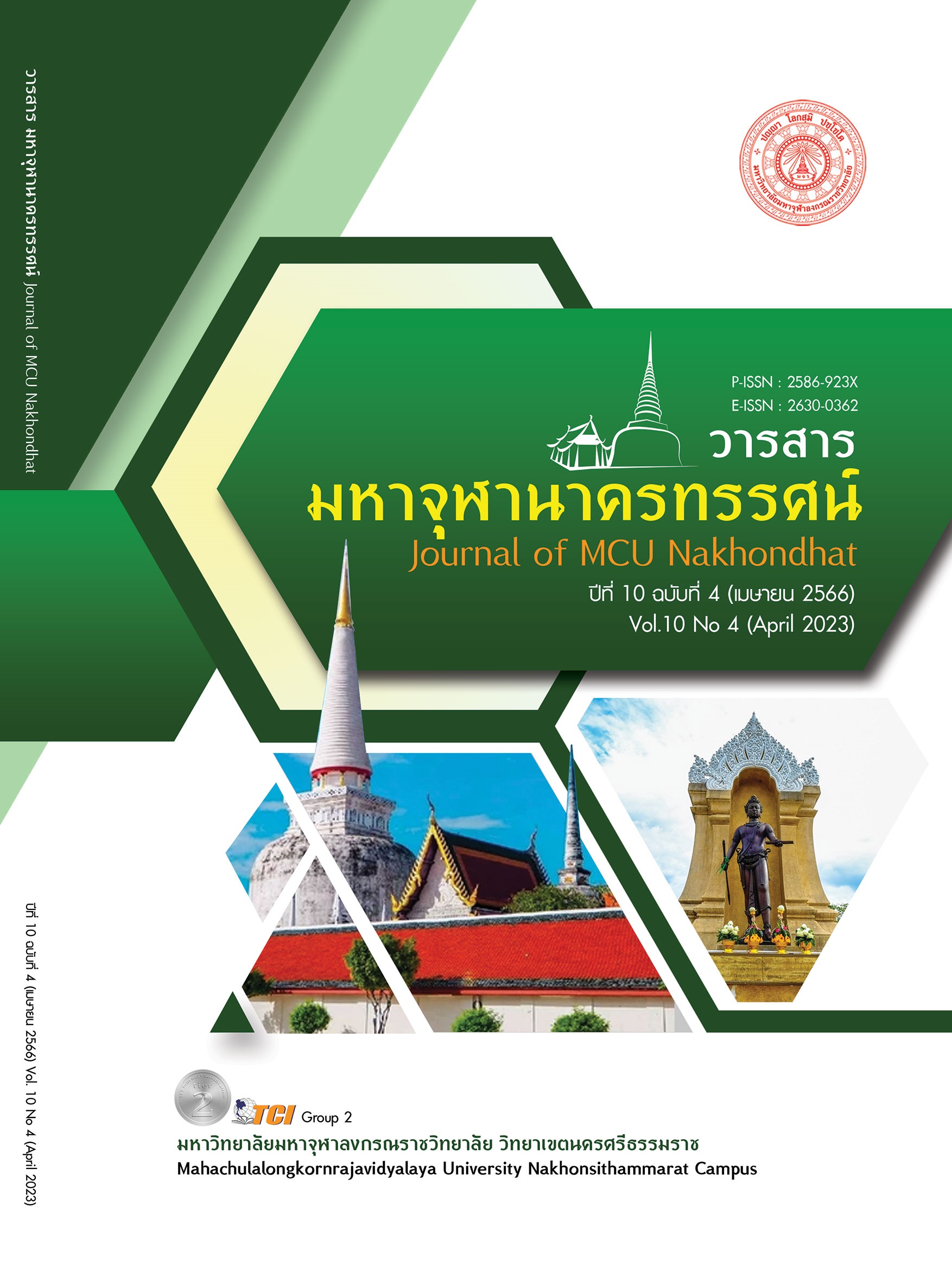INTEGRATION OF BUDDHISM IN TEACHING AND LEARNING
Main Article Content
Abstract
Education is both a development and a tool for development, i.e. the development of a person through the development of the whole person or whole life. The development itself is education. When students have an education like this It is used as a tool for living and creating things. Education has become a tool of development. Here we will discuss the principles of Buddhism that will be used as the basis for complete education. To focus on human intelligence or wisdom. Then bring the wisdom that comes from education to develop yourself to be a complete human being. in which human beings are noble beings with education Humans differ from other animals in that It is an animal that must be trained and studied. There are principles that should be noted in matters such as Humans are animals that must be trained, meaning that they can live their lives. have a well-being There is almost nothing that a human can get for nothing. But it has come through education, that is, learning, practicing, developing, all different from other animals that live by instincts. almost no need to learn, practice, develop In the Buddhist way The correct development of life is To lead life in the right way to lead to a goal is to have a right way of life. We call it the Magk. The Magk is a way of life that is right and virtuous, leading to a goal. This path is in conjunction with another principle, the sikkha. Therefore, if one wants to live a virtuous life, practice or practice is required. And training and training to make life go in the right way, we call it sikkha or education. is to practice life in a way that is right and virtuous
Article Details

This work is licensed under a Creative Commons Attribution-NonCommercial-NoDerivatives 4.0 International License.
References
ครูบ้านนอก. (2566). เรียกใช้เมื่อ 12 เมษายน 2566 จาก https://www.kroobannok. com/3735
ทิศนา แขมมณี. (2554). 14 วิธีสอน สำหรับครูมืออาชีพ. กรุงเทพมหานคร: สำนักพิมพ์แห่งจุฬาลงกรณ์มหาวิทยาลัย.
ทิศนา แขมมณี. (2556). ศาสตร์การสอน: องค์ความรู้เพื่อการจัดกระบวนการเรียนรู้ที่มีประสิทธิภาพ. (พิมพ์ครั้งที่ 17). กรุงเทพมหานคร : สำนักพิมพ์แห่งจุฬาลงกรณ์มหาวิทยาลัย.
บุษกร พรมหล้าวรรณ. (2549). จิตวิทยาทางการศึกษา. กรุงเทพมหานคร: ศูนย์สื่อเสริมกรุงเทพ.
พรพิมล พรพีรชนม์. (2550). การจัดกระบวนการเรียนรู้. สงขลา: เทมการพิมพ์สงขลา.
พระธรรมปิฎก (ป.อ. ปยุตฺโต). (2539). จาริกบุญ จารึกธรรม. (พิมพ์ครั้งที่ 3). กรุงเทพมหานคร: สหธรรมิก.
วิภาวดี วงศ์เลิศ. (2544). การพัฒนาบทเรียนคอมพิวเตอร์ช่วยสอนแบบมัลติมีเดีย เรื่อง “เซต” ชั้นมัธยมศึกษาปีที่ 4 โดยใช้เทคนิคการเรียนรู้แบบคู่คิดอภิปราย. ใน วิทยานิพนธ์การศึกษามหาบัณฑิต สาขาวิชาการมัธยมศึกษา. มหาวิทยาลัยศรีนครินทรวิโรฒ.
สมเด็จพระพุทธโฆษาจารย์ (ป.อ.ปยุตฺโต). (2561). วินัย: เรื่องใหญ่กว่าที่คิด. เรียกใช้เมื่อ 30 ตุลาคม 2563 จาก https://www.watnyanaves.net/en/book_detail/405
สมบัติ การจนารักพงค์. (2547). 29 เทคนิคการจัดกิจกรรมการเรียนรู้ที่หลากหลาย: การเรียนแบบร่วมมือ. กรุงเทพมหานคร: ธารอักษร.
สุพิน บุญชูวงศ์. (2554). เทคนิคการสอน. กรุงเทพมหานคร: คณะครุศาสตร์ มหาวิทยาลัยราชภัฏสวนดุสิต.
แหล่งรวมข้อมูลการบูรณาการการเรียนการสอน. (2566). เรียกใช้เมื่อ 10 เมษายน 2566 จาก www.montfort.ac.th/private-school/combined
อาภรณ์ ใจเที่ยง. (2537). หลักการสอน. กรุงเทพมหานคร: โอเดียนสโตร์.


